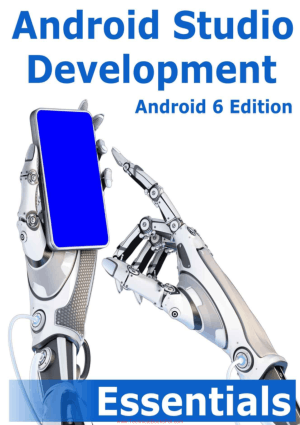

- #Android studio development android#
- #Android studio development software#
- #Android studio development code#
- #Android studio development tv#
- #Android studio development download#
Launching a separate activity for each app screen is terribly inefficient, since the system will try to keep them in memory as long as it can. They help a lot with optimizing for various screens, they are easily managed by their parent activity, can be reused, combined and positioned at will. Think of them as separate building blocks with their own (rather complex) life cycles that exist inside an Activity.

#Android studio development android#
Common Mistake #4: Not Using FragmentsĪ while ago in Honeycomb, Android introduced the concept of fragments. It will save you a lot of programming time, and strip the AndroidManifest.xml of unnecessary permissions. Unless there is a good reason to make a custom implementation (ex., a camera that applies filters), always use Intents for these scenarios. Sharing content, taking pictures, recording video, picking contacts, adding events, opening links with native apps, etc.

This approach can be applied to almost anything. In case that you have any doubts, best solution is option 2! tData(Uri.parse("sms:" + telephoneNumber)) Start an SMS Intent and let an app designed for SMS do the work Intent sendIntent = new Intent(Intent.ACTION_VIEW)
#Android studio development code#
Write your own code for sending SMS using the SmsManager.Which of the two options seems more logical?
#Android studio development download#
Let’s say you have a gallery app that can share a download link to some images via SMS. It’s a way of passing data between different parts of the app or, even better, different apps on the system. Intents are one of Android’s key components. Even better, try out Genymotion, it’s lightning fast and comes with a lot of different popular preset devices.Īlso, have you tried rotating your device? All hell can break loose… Common Mistake #3: Not Using Intents The Android Emulator is super good in replicating physical devices. You don’t own thousands of devices? Not a problem. There are literally thousands of possible scenarios, but after a while you develop a sense for covering them all with a handful of cases. 9-patch drawables are stretched to fit the screen.Resources are included multiple times to account for different densities and orientations.Density-independent pixels (dp) are different than normal pixels (px).

Here are a few Android programming tips to remember: Unless you are building a kiosk/promo app for a single tablet, chances are your Android app won’t look good on every device. Common Mistake #2: Developing for Your Android Device These are just a few of the many other small things that can ruin the user experience. Splash screens are redundant beyond the initial setup/introduction.App icons should not be placed inside a rounded rectangle (unless that’s your actual logo ex.System notification icons should not have color.You should not be making static tabs, and they don’t belong on the bottom (I’m pointing at you Instagram).Here are some of the most common examples of this Android mistake: (Google does this all the time, but never by copy-pasting.) Unless there is a super good reason for breaking the guidelines, don’t do it. Pushing iOS design standards to them is a terrible strategy! But, it’s 2014 and users have been using Android for quite a while now, and they’ve grown accustomed to the platform. But still, every now and then, we see an app that is an iOS clone.ĭon’t get me wrong, I’m not an Android programming evangelist! I respect every platform that moves the mobile world a step forward. To my great pleasure, this Android mistake is far less common nowadays (partially because clients are beginning to realize that the days when Apple was setting all the design standards are long gone). Here’s an Android programming tutorial to address the 10 most common mistakes Android developers make. These bugs are easily prevented, as long as we get the basics right! Regardless of such huge segmentation, the majority of bugs are actually introduced because of logic errors. Unfortunately, segmentation is the price to pay for openness, and there are thousands of ways your app can fail on different devices, even as an advanced Android programmer.
#Android studio development software#
There are thousands of different devices, with different screen sizes, chip architectures, hardware configurations, and software versions. Look how good the new Material design pattern looks! The platform has matured quite a bit since the initial AOSP release, and set the user expectations bar quite high. With the latest Lollipop update, Android programming continues to improve.
#Android studio development tv#
What’s not to like about this platform? It’s free, it’s customizable, it’s rapidly growing and it’s available not just on your phone or tablet, but on your smartwatch, TV and car too.


 0 kommentar(er)
0 kommentar(er)
